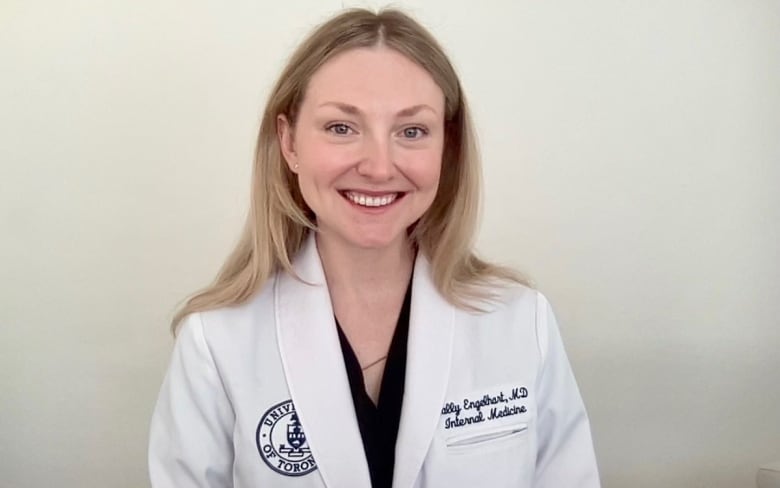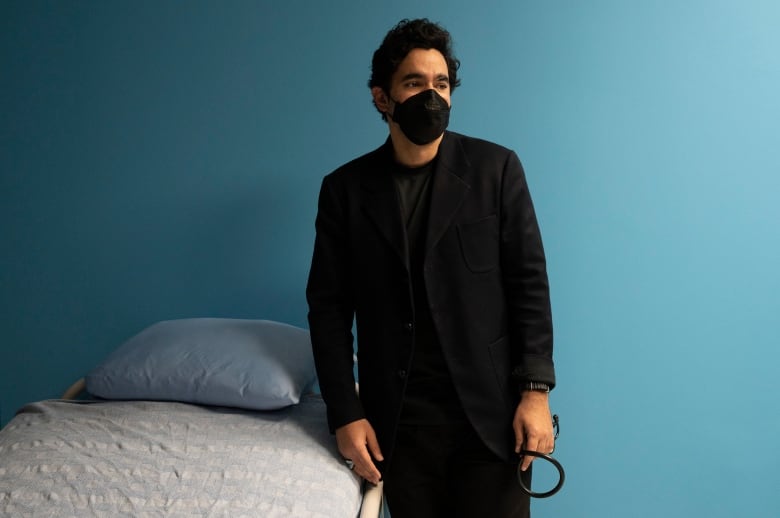Canadian doctors warned to be on the lookout for scurvy
Condition triggered by severe deficiency of vitamin C is linked to food insecurity, says report

Scurvy is a disease that likely conjures up images of sickly sailors from hundreds of years ago, but doctors in Canada are being warned to look out for the condition now, as a result of growing food insecurity.
A report published Monday in the Canadian Medical Association Journal (CMAJ) details the case study of a 65-year-old woman diagnosed with scurvy at a Toronto hospital last year.
The authors say the case points to the need for physicians to consider the possibility of scurvy,particularly among patients at higher risk for nutrient deficiencies, including people with low socioeconomic status and isolated older adults.
"This isn't the first case of scurvy that I've seen in my career so far,"said Dr. Sally Engelhart, the study's lead authorand an internal medicine specialist at Mount Sinai Hospital in Toronto.
Scurvy results from having a severe deficiency of vitamin C. Natural sources of vitamin C also known as ascorbic acid include citrus fruits, such as oranges and lemons, and vegetables such as broccoli and spinach.
The CMAJ report draws links between scurvy and food insecurity when low income forces someone to skip meals or reduce the nutritional value of the food they eat.

While there are no clear statistics that show whether the incidence of scurvy is on the rise in Canada, recent research suggests it's a growing problem in the U.S.
A study published in July that examined hospital records of some 19 million children in the U.S. found the incidence of scurvy tripled in a four-year period. The rate went from 8.2 cases per 100,000 children in 2016 to 26.7 cases per 100,000 children in 2020.
Engelhart says she thinks most physicians in Canada would not expect to see cases of scurvy.
"Really, if you're not thinking about scurvy, then there's no way that you're going to be able to diagnose it," Engelhart said in an interview.
Her report says the case "presents a complex example of food insecurity manifesting as an uncommon diagnosis."
The woman socially isolated, with little family support and limited mobility had been living almost entirely on canned soup, canned tuna, white bread and processed cheese, with no fresh produce.

Symptoms of scurvy can be seen within eight to 12 weeks of inadequate intake of vitamin C, and can include fatigue, large patches of bruising, bleeding gums, as well as hemorrhages that make hair follicles appear bright red.
Left untreated, it can lead to spontaneous internal bleeding, the destruction of red blood cells and, eventually, death.
Not an 'archaic diagnosis'
The authors of the CMAJ report say scurvy "should not be considered only an archaic diagnosis of 18th-century seafarers."
Researchers at McMaster University in Hamilton, Ont.,found 52 patients hospitalized between 2009 and 2017 whose charts showed vitamin C levels low enough to cause scurvy, 13 of whom were actually diagnosed with the disease.
Health advocates in the U.K. have been warning for years about the risk of scurvy in poorer communities.
A 2008 study published in the Journal of Public Health of 1,300 people from low-income households across the U.K. found 25 per cent of men and 16 per cent of women had deficient levels of vitamin C.

"Health professionals need to be aware that poor vitamin C status is relatively common among adults living on a low income," said the authors of the U.K. study.
Dr. Andrew Boozary, a primary care physician at the University of Toronto's Dalla Lana School of Public Health, says people who have higher degrees of food insecurity are at much higher risk for many chronic illnesses, including cardiovascular disease and mental health conditions.
"There is a real continuum of serious health conditions that food insecurity really exacerbates," said Boozary in an interview.
Boozary, who was not involved in the CMAJ study, said that it "speaks to some of the really troubling statistics that families and households are facing with [lack of] food security."
According to research by Statistics Canada released in May, 16.9 per cent of Canadians faced moderate or severe food insecurity in 2022, compared with 12.9 per cent in 2021.
A 2015 study in CMAJ found higher rates of health-system use everything from emergency department visits to physician services and prescription drugs among Ontario households with more food insecurity.












_(720p).jpg)


 OFFICIAL HD MUSIC VIDEO.jpg)
.jpg)



























































































